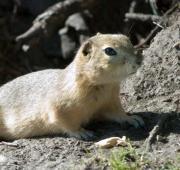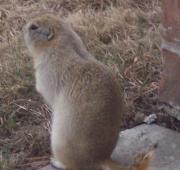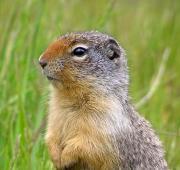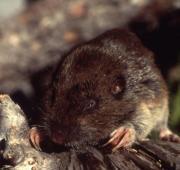 There are two main species of gopher, the pocket gopher and the Richardsons ground squirrel, both of these species of gopher are found in North America. The gopher is a small squirrel-like rodent which lives in burrows underground.
There are two main species of gopher, the pocket gopher and the Richardsons ground squirrel, both of these species of gopher are found in North America. The gopher is a small squirrel-like rodent which lives in burrows underground. The gopher digs large networks of tunnels and subterranean chambers which are referred to as gopher towns. These gopher towns contain an extensive network of tunnels that often result in the disruption of agriculture and landscapes.
The gopher digs large networks of tunnels and subterranean chambers which are referred to as gopher towns. These gopher towns contain an extensive network of tunnels that often result in the disruption of agriculture and landscapes.


The gopher is a true hoarding mammal as the gopher stores the food that the gopher finds in its cheek pouches before taking the food back to the gopher burrow, where the gophers are known to collect astonishing amounts of food.
The presence of a gopher can be determined by the mound of dirt that can be seen on the surface of the ground. In a similar way to the mole, the tunneling of the gopher creates a large amount of dirt being pushed out behind it, and this therefore creates the gopher mound.
Some species of gopher, such as the Richardsons ground squirrel, are known to hibernate during the cold northern winters. Baby gophers will usually hibernate at the beginning of Autumn in their first year of life, but the adult gophers often begin their hibernation in the middle of the summer, around July time! The gophers hibernate until the spring, when the male gophers emerge from hibernation first in order to establish their territories before the female gophers wake up.
Gophers are omnivorous animals with the diet of the gopher being predominantly comprised of nuts, seeds and berries along with grass, grains and insects which is where the gopher gets the majority of its protein from. The gopher however, has a number of natural predators mainly because of the size and abundance of the gopher in certain areas. The natural predators of the gopher include large birds, badgers and coyotes and of course, the human, who is known to kill the gopher as an agricultural pest.

